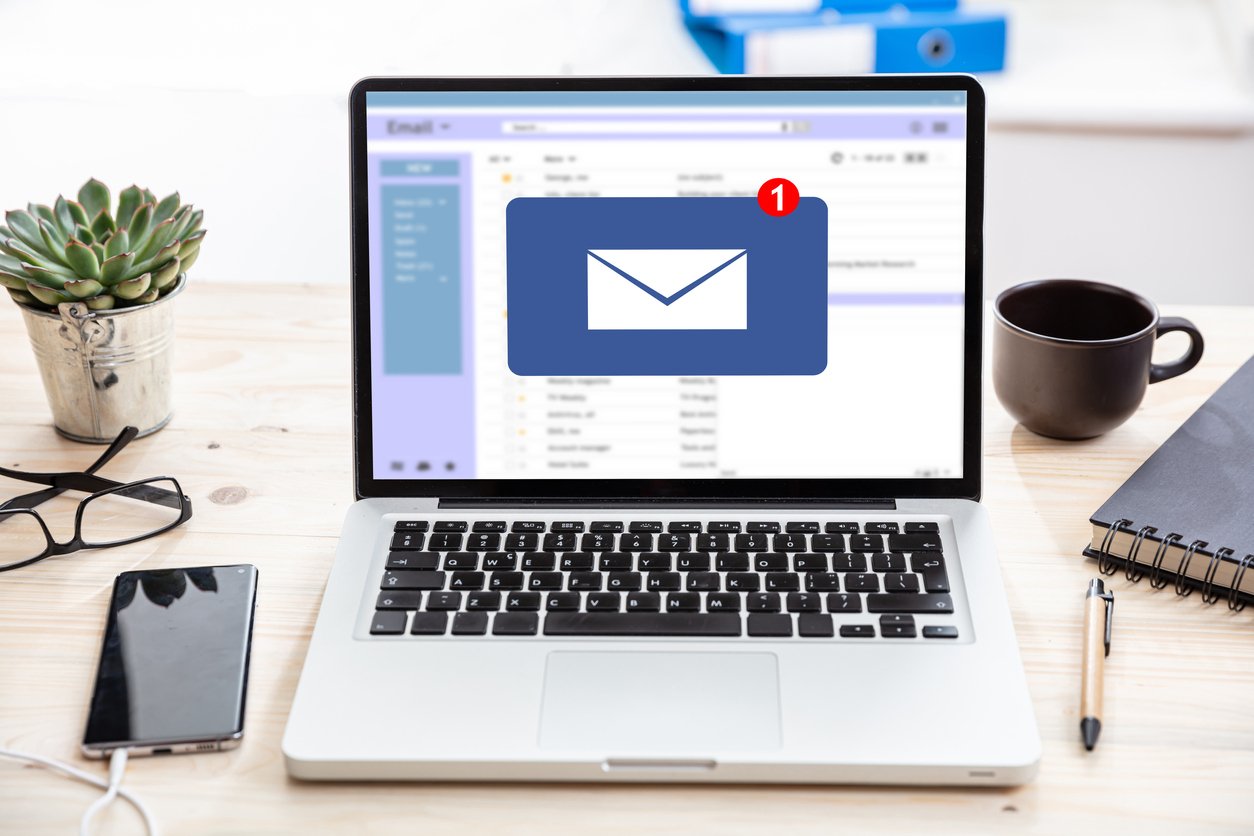
How to Create a Winning Sales Call Script (With Real-World Examples)
 Updated on
Updated on
By Ringy
Table of Contents
Table of Contents
Let's be honest—sales calls can be intimidating.
There's always that moment of hesitation before you dial, whether you're:
- Cold calling
- Following up on a lead
- Trying to close that big deal
But what if you had a secret weapon?
A well-crafted sales call script that doesn't just sound good on paper but actually works in real conversations?
That's exactly what we're going to cover in this guide.
You'll learn how to create a script that's not robotic but strategic—one that keeps you on track while still sounding natural. We'll also dive into real-world examples, pro tips to keep things engaging, and even how to handle objections like a pro.
And don't worry—we'll keep things fun (because let's face it, sales can be stressful enough).
Key Components of a Winning Sales Call Script

A great sales script isn't just a list of things to say—it's a strategy.
Here's what you need:
The Hook
First impressions matter. You've got about 8 seconds to grab your prospect's attention before they mentally check out.
Here are three examples:
- Personalized Opening: "Hey [Prospect Name], I saw you checked out our latest webinar on [Topic]. Curious what stood out to you?"
- Intriguing Question: "Would you be open to a strategy that boosts your conversion rates by 30%?"
- Benefit-Oriented Statement: "I have something that could cut your admin work in half—want to hear more?"
People are busy. If you don't hook them early, they're already thinking about their next meeting.
The Introduction
Once they're engaged, introduce yourself and make it clear why they should listen:
- State Your Name & Company Clearly – "Hey [Prospect], this is [Your Name] from Ringy."
- Explain Why You're Calling – "We help businesses like yours automate lead management and increase sales."
- Build Instant Rapport – "I noticed you're in [Industry]—a lot of our clients in your space have seen great results with us."
Example: "Hi [Prospect Name], this is [Your Name] from Ringy. We specialize in automating follow-ups so you never lose another lead. I saw you recently downloaded our guide—curious what stood out to you?"
The Value Proposition
Your prospect is now listening.
Now, show them why your solution is exactly what they need:
- Focus on Benefits, Not Just Features: Instead of "We offer automated follow-ups," say, "We help businesses increase response rates by 40% with automated follow-ups."
- Use Real Examples: "One of our clients cut their no-show rates in half after implementing our system."
- Make It Relatable: "Ever felt like you're chasing leads that never respond? We fix that."
Example: "Ringy helps businesses automate lead follow-ups, so you can focus on closing deals instead of tracking down prospects. For example, one of our clients saw a 40% boost in response rates within a month. Sound like something that could help you?"
Handling Objections Like a Pro
Objections aren't rejections—they're just concerns waiting for the right answer.
Here's how to tackle common ones:
Objection: "Your product is too expensive."
Response: "I totally get that. Many of our clients felt the same way at first. But after seeing how much time they save and how their conversion rates improve, they realized the ROI far outweighs the cost. Would it help if I showed you a quick breakdown of how it pays for itself?"
Objection: "I don't have time to set up a new system."
Response: "I hear you! That's why Ringy offers free onboarding and setup. Most of our users are up and running in under an hour."
Closing the Deal – Sealing the Next Step
You've built rapport, shown value, and handled objections. Now, it's time to move forward with a confident close.
Here are some effective ways to do it:
- Direct Approach: "Would you like to start with a free trial?"
- Assumptive Close: "Let's go ahead and schedule a demo—does tomorrow work?"
- Alternative Choice: "Would you prefer to start with our basic plan or premium?"
- Recap & Close: "So, we help automate follow-ups, increase response rates, and save time. Ready to give it a try?"
By making the next step simple and natural, you remove any friction that could cause hesitation and bring each sale closer to closing. In fact, research shows that reducing friction in the sales process can recover over 30% of abandoned carts for online stores (imagine what it can do for your business.)
Sales Call Script Examples

Alright, let's ditch the formalities and get straight to the good stuff! Check out these phone sales call script examples to see these strategies in action.
Basic Sales Call Script Sample (for New Sales Reps)
This script is perfect for new reps who need a simple yet effective approach:
- Hook: "Hi [Prospect], this is [Your Name]. Hope I'm catching you at a good time?"
- Introduction: "I'm with Ringy. We help businesses like yours automate lead follow-ups."
- Value Proposition: "Most businesses struggle with follow-ups. We automate them so you never miss a lead."
- Handling Objections: "I get that—it's a big change. But most of our clients are fully set up in under an hour."
- Close: "Would you be open to a 15-minute chat to see how this could work for you?"
This basic structure can be adapted to various sales scenarios, providing a solid foundation for new sales representatives (sales training also helps) to build upon as they gain experience and confidence. Remember, the key is to sound natural and adjust as needed based on the prospect's responses.
Phone Sales Call Script Example (for Cold Calling Scenarios)
Okay, so, cold calls can be a real pain, for both sides.
But here's a script that could warm things up a bit:
- Intro: "Hey [Prospect], it's [Your Name] from Ringy. How's it going today?"
- Value Proposition: "I'll be quick, I promise. We help businesses like yours automate their follow-ups and get way better results from their outreach."
- Handling Objections: "I totally get where you're coming from. A lot of people feel that way at first, but our customers usually see a 40% jump in responses within a month - it's pretty wild."
- Closing: "Sounds good? Let's jump on a quick call – say, 15 minutes? – and see if we can make this work for you. What do you think?"
Cold calling doesn't have to feel like an uphill battle (especially if you try out these cold-calling scripts.) With the right script, a confident tone, and a little persistence, you can turn even the most skeptical prospects into interested leads. The key is to keep it natural, focus on the value you bring, and always be ready to handle objections with ease.
Every call is an opportunity—so take a deep breath, dial that number, and start building those connections.
Follow-up Sales Call Script (How to Nurture Leads Effectively)
Following up is key to closing deals.
Here's a great three-step script to get you started:
- Remind them what you talked about - something like, "Hey [Prospect Name], remember we chatted last week about how to speed up your lead response times?"
- Hit them with the value proposition again. "Our automation tools have helped businesses like yours get back to leads 70% faster."
- Ask for the next step. "How about a quick call to figure out how to get you started?"
Remember, the follow-up call isn't about being pushy; it's about building a relationship and offering a solution. By referencing your previous conversation and highlighting the value you bring, you're positioning yourself as a helpful partner, not just another salesperson.
Call Center Sales Script Example (Customer Service vs. Outbound Sales)
Call centers handle two very different types of sales calls—inbound and outbound. While inbound sales focus on assisting customers who reach out with interest or issues, outbound calling scripting and sales involve reaching out to prospects who may not even know about your product yet.
Below is a comparison to help understand the unique strategies for each type of call:
|
Aspect |
Inbound Sales Calls |
Outbound Sales Calls |
|
Who Initiates? |
The customer/prospect |
The sales rep |
|
Customer Intent |
They already have some level of interest |
They may not be expecting the call |
|
Tone & Approach |
Friendly, helpful, and informative |
Persuasive, engaging, and to the point |
|
Common Challenges |
Answering detailed product/service questions |
Keeping the prospect engaged and overcoming objections |
|
Primary Goal |
Convert inquiries into sales or assist with issues |
Generate interest and schedule a follow-up/demo |
|
Closing Strategy |
Offer a solution or upsell based on needs |
Prompt for a next step, like a meeting or demo |
Both inbound and outbound sales require active listening, adaptability, and confidence. The best call center reps know how to guide conversations, handle objections, and close deals without making the interaction feel forced.
Now, let's break down these two call types with real-world script examples.
Inbound Sales Calls
Inbound calls are usually from prospects or customers who have already expressed interest in your product or service. Maybe they filled out a form on your website, clicked on an ad, or need help with an existing service.
The goal here is to guide them smoothly toward a purchase or resolution.
Inbound Sales Script Example
Greeting & Identifying the Need: "Thank you for calling Ringy! This is [Your Name]. How can I assist you today?"
If the caller is inquiring about your product, your response should guide them toward a solution:
"I'd be happy to help! Just so I can point you in the right direction, can you tell me a little about what you're looking for?"
Providing Value & Addressing Pain Points: "I see! Many businesses in your industry struggle with [Common Pain Point]. That's exactly why we created Ringy—to help solve this issue by [Value Proposition]."
Closing the Sale: "Would you be interested in a quick walkthrough to see how it works? I can set you up with a free demo or a trial—whichever works best for you!"
For customer support inquiries, the approach is slightly different but still focused on resolving issues efficiently while maintaining a positive experience.
Outbound Sales Calls
Outbound sales require a proactive approach since you're calling someone who might not be expecting you. The challenge here is to spark interest quickly before the prospect disengages.
Outbound Sales Script Example
Opening Line (The Hook): "Hi [Prospect], I'm [Your Name] from Ringy. How's your day going?"
(Starting with a friendly, casual tone can make the conversation feel more natural.)
Presenting the Value: "I'll keep this quick! I'm reaching out because I noticed [Personalized Observation, e.g., 'your team is growing, and that's when lead management can get tricky']. At Ringy, we help businesses like yours automate follow-ups and boost conversions effortlessly."
Handling Objections Smoothly: "I totally understand if this isn't the best time. But just to give you an idea—businesses using Ringy typically see a 40% improvement in response rates within the first month. If I could show you how it works in a quick call, would that be worth 15 minutes?"
Closing with a Clear CTA: "Would a quick demo tomorrow at 10 AM or 2 PM work better for you?"
Remember, the key to successful outbound sales is to be prepared, confident, and persistent. By using a well-crafted script, personalizing your approach, and focusing on the value you bring, you can turn cold calls into warm leads and ultimately, closed deals.
Call Center Sales Pitch Example (Persuasive Techniques to Increase Conversions)
Now, let's combine storytelling, urgency, and a strong CTA into a complete sales pitch:
*"Hey [Prospect], I wanted to quickly share how Ringy has helped businesses like yours. One of our clients, a growing e-commerce store, was struggling with lead follow-ups. They had great leads but weren't responding fast enough to close deals. After switching to Ringy, their response rates increased by 50% in the first month. Now, they're converting more customers without extra effort.
Right now, we have a limited-time offer—20% off the first three months for new clients. This deal expires at the end of the week, so if you're interested, now is the best time to get started.
Let's set up a quick demo so you can see it in action. Does tomorrow at 10 AM or 2 PM work better for you?"*
With this approach, you're not just selling a product—you're painting a picture, creating urgency, and guiding the prospect toward a clear next step.
Pro Tips for Sales Calls

Sales calls can feel daunting, but with the right approach, they can turn into engaging conversations that drive results. The key is to balance structure with flexibility—following a script without sounding robotic.
Below are some essential pro tips to keep your calls natural, effective, and conversion-focused.
How to Sound Natural Even with a Script
Reading directly from a script can make you sound like an automated recording, which is a major turn-off for prospects.
The trick is to internalize the script rather than just recite it.
Instead of reading word-for-word, treat it as a guide, allowing room for personalization. Adjust your tone, add pauses, and inject personality into the conversation. Practicing different scenarios can help you develop a rhythm, making your delivery sound effortless and engaging.
Using Active Listening to Engage Prospects
Talking at a prospect is easy; engaging them in a real conversation is what leads to sales.
Active listening means truly hearing what they're saying rather than just waiting for your turn to speak.
Here are three tips:
- Acknowledge their concerns
- Repeat key points to show understanding
- Ask open-ended questions that encourage dialogue
For example, instead of rushing into your pitch, say, "It sounds like you're struggling with lead follow-ups. Can you tell me more about that?" This makes the prospect feel valued and increases the chances of a productive conversation.
Common Mistakes to Avoid When Using a Call Sales Script
One of the biggest mistakes sales reps make is sticking to the script too rigidly—this can make the conversation feel forced.
Another common issue is talking too much without letting the prospect speak.
Remember, sales calls should be two-way conversations, not monologues.
Avoid using jargon or overly complex explanations that might confuse the prospect.
Lastly, don't ignore objections—brushing them off can make the caller seem pushy. Instead, acknowledge concerns and address them with relevant success stories or data.
The Role of CRM and Automation in Improving Call Efficiency
A Customer Relationship Management (CRM) system (Like Ringy) is quinessential for sales calls. It keeps track of customer interactions, allowing you to personalize conversations and follow up effectively.
You can streamline your sales process with features, such as:
- Call tracking
- Automated reminders
- AI-powered insights
CRM sales software tools like Ringy automate follow-ups and nurture leads so you can focus on closing deals instead of chasing cold leads. With CRM and marketing automation, you can maximize efficiency and improve conversion rates without doubling your workload.
Sales Call Script Software for Winners

Sales calls don't have to be awkward, nerve-wracking, or a waste of time.
With the right call scripting, a natural approach, and the power of automation, you can turn cold calls into warm conversations—and warm conversations into closed deals.
Ready to supercharge your sales calls?
Request a demo of Ringy today and see the difference for yourself!

Skyrocket your sales with the CRM that does it all.
Calling? Check. SMS? Check. Automation and AI? Check. Effortlessly keep in touch with your customers and boost your revenue without limits.

Take your sales to new heights with Ringy.
Sales in a slump? Ringy gives you the tools and flexibility you need to capture leads, engage with them, and turn them into customers.
Subscribe to Our Blog
Enter your email to get the latest updates sent straight to your inbox!
Categories
Related Articles




































































































